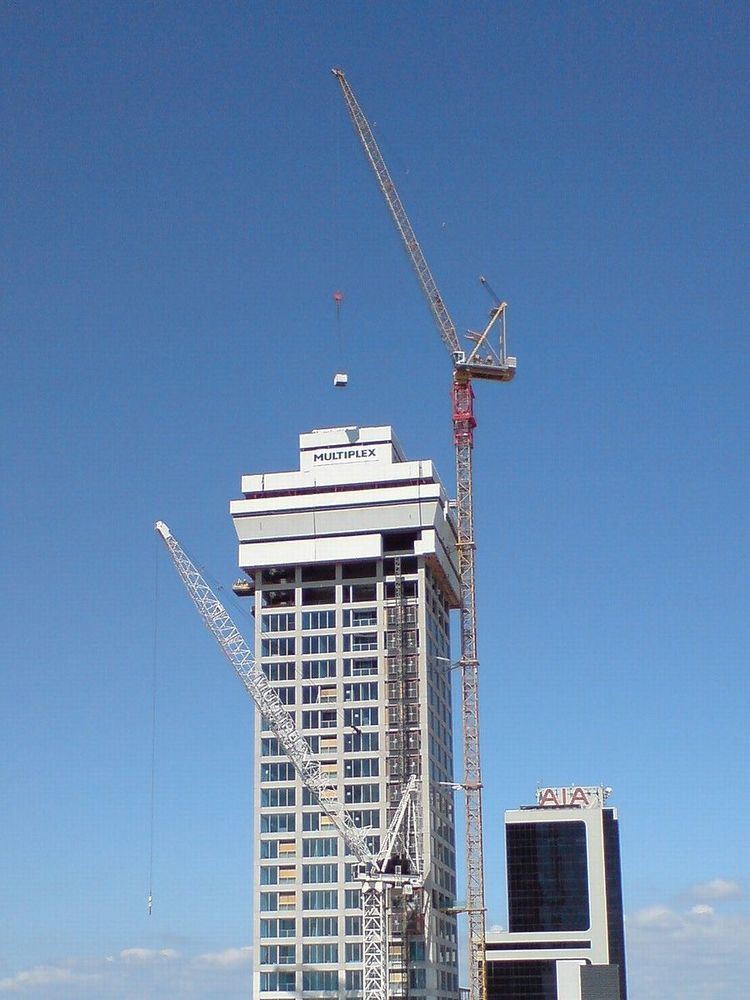 | ||
Climbing formwork is a special type formwork for vertical concrete structures that rises with the building process. While relatively complicated and costly, it can be an effective solution for buildings that are either very repetitive in form (such as towers or skyscrapers) or that require a seamless wall structure (using gliding formwork, a special type of climbing formwork).
Contents
Various types of climbing formwork exist, which are either relocated from time to time, or can even move on their own (usually on hydraulic jacks, required for self-climbing and gliding formworks).
Process
Best known in the construction of towers, skyscrapers and other tall vertical structures, it allows the reuse of the same formwork over and over and over for identical (or very similar) sections / stories further up the structure. It can also enable very large concrete structures to be constructed in one single pour (which may take days or weeks as the formwork rises with the process), thus creating seamless structures with enhanced strength and visual appearance, as well as reducing construction times and material costs (at the joints which would otherwise require extra reinforcement / connectors).
The climbing formwork structure normally does not only contain the formwork itself, but also usually provides working space / scaffolds for construction crews. It may also provide areas for machinery and screens for weather protection, up to being fully enclosed while yet staying modular around a changing building structure.
